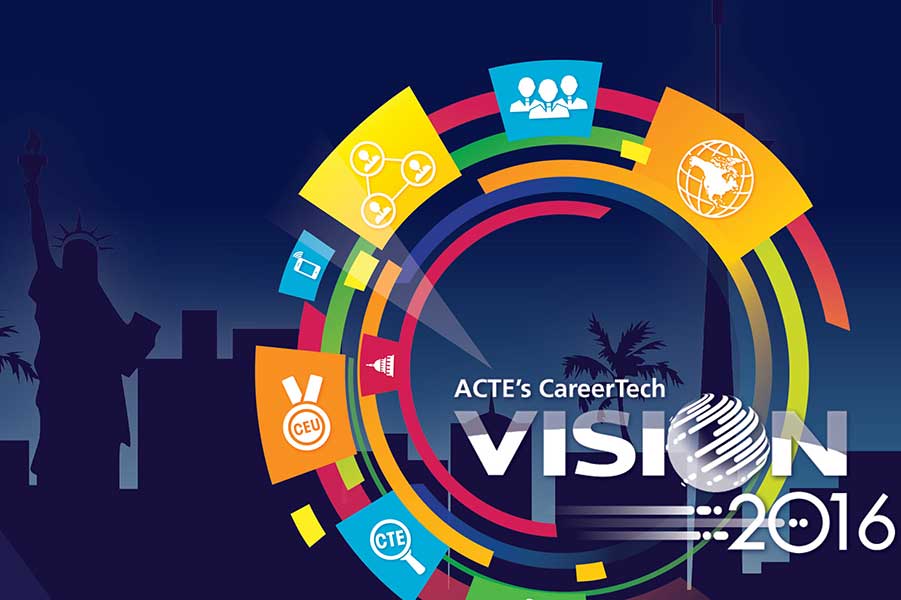
 What happens in Vegas stays in Vegas. At least that’s the age-old story. As we head to Las Vegas next week, we’re not going to play blackjack, poker, and roulette, or sling our spare change into the slot machines. Instead, we’ll be meeting with Career and Technical Education (CTE) professionals betting on a bright future for students pursuing highly skilled careers in an ever-changing workforce ripe with opportunity.
What happens in Vegas stays in Vegas. At least that’s the age-old story. As we head to Las Vegas next week, we’re not going to play blackjack, poker, and roulette, or sling our spare change into the slot machines. Instead, we’ll be meeting with Career and Technical Education (CTE) professionals betting on a bright future for students pursuing highly skilled careers in an ever-changing workforce ripe with opportunity.
With the Association of Career and Technical Education (ACTE) CareerTech VISION conference a week away, I want to explore an educational pathway that’s gained significant support over the last decade from educators, students and the government. As our workforce evolves and embraces modern tools, we’ve seen school districts and state/federal legislation accommodating a growing need for viable career pathways in CTE, and will continue into the new year. Here are a few areas we anticipate will be huge areas of interest for CTE in 2017:
Industry-backed certifications
Earning an industry-backed certification gives students an opportunity to enhance their career training while they complete their regular coursework. In recent years, President Obama called for a renewed focus on credentials and certifications other than a college degree. In response, CTE programs and curriculum developers are broadening their approach with new offerings to reflect the current workforce and job market, with certifications being designed to move students into careers that are in need of highly skilled workers.
Technology and facilities
Specialized industries have changed significantly over the last few decades, requiring school districts to modernize their facilities and deploy updated technology to ensure students are receiving the most up-to-date training available.
Federal and state standards/funding
Perkins IV legislation is the primary source of federal funding to states for improving CTE programs, and provides more than $1.1 billion annually. States are required to maintain meaningful accountability from improving academic standards by outlining key definitions/methods for evaluating student performance. Districts that collect data on successful performance standards for students and educators are eligible to receive additional funding plus incentives from the federal government for CTE-related projects.
Jobs of the future
According to the U.S. Department of Labor, 65 percent of today’s students will be employed in jobs that haven’t even been created yet. With such a large number, and as specialized industries continue to evolve daily, it’s difficult to predict the jobs of the future, but it’s essential that students explore their interests while following a strong educational pathway that not only helps them identify their strengths, but leads them to success in highly sought after careers within today’s modernized workforce.
CTE has quickly evolved into a comprehensive training model that assists students in pursuing a specialized career as they learn the technical aspects of their job. As the late Senator Conrad Burns said “Career and technical has made a real difference in the lives of countless young people nationwide; they build self-confidence and leadership skills by allowing students to utilize their unique gifts and talents.”
2017 will be the year of CTE, and we’re excited to learn what comes next with our colleagues at CareerTech VISION 2016.
